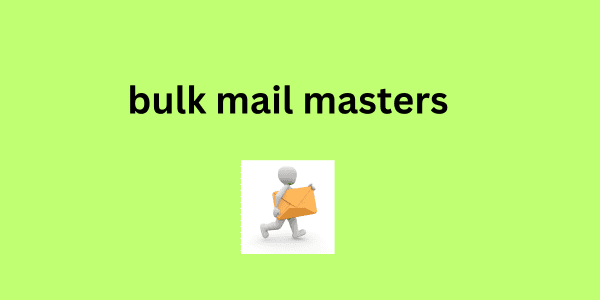Post by santo999 on Nov 25, 2024 9:29:15 GMT
These goals should support your overall marketing and business objectives. Think of each goal as a specific desired outcome. Typical examples of email marketing goals include: growing your subscriber or contact list, improving open and click rates, generating sales, or promoting a new product. Having goals will help you choose the right content to include in your emails. Your goals represent the steps along the way. Make sure your goals are SMART (Specific, Measurable, Attainable, Realistic, Time-bound) . For example, if your broader goal is to grow your subscriber list, then a suitable goal might be to increase newsletter signups by 1,000 over a 12-month period.
Step 3: Define and understand your target audience These lines focus on the "who" behind your email marketing strategy., you need to understand the person on the bulk email service receiving end, as well as their motivations and needs related to the product or service. This will help ensure that your emails are personalized and relevant, as your database is made up of the subscribers you are looking for. Think about all the information you have about your current customers. Write down everything you know about their demographic and behavioral characteristics.

Consider their content preferences. What type of emails get the highest open and conversion rates from your subscribers? Compile this information and create buyer personas. These people will be used as a reference point when it comes to creating content. Once you have identified your target audience, you will map out the customer's purchasing journey and define the different moments in which email marketing should intervene and with what message. This is particularly important in B2B businesses, as potential customers moving through the funnel need a lot of information before making a purchase. So how can you use marketing emails to increase their interest? Step 4: Define the different types of emails you will send Your company probably sends several different types of emails, each with a different purpose.
Step 3: Define and understand your target audience These lines focus on the "who" behind your email marketing strategy., you need to understand the person on the bulk email service receiving end, as well as their motivations and needs related to the product or service. This will help ensure that your emails are personalized and relevant, as your database is made up of the subscribers you are looking for. Think about all the information you have about your current customers. Write down everything you know about their demographic and behavioral characteristics.

Consider their content preferences. What type of emails get the highest open and conversion rates from your subscribers? Compile this information and create buyer personas. These people will be used as a reference point when it comes to creating content. Once you have identified your target audience, you will map out the customer's purchasing journey and define the different moments in which email marketing should intervene and with what message. This is particularly important in B2B businesses, as potential customers moving through the funnel need a lot of information before making a purchase. So how can you use marketing emails to increase their interest? Step 4: Define the different types of emails you will send Your company probably sends several different types of emails, each with a different purpose.
